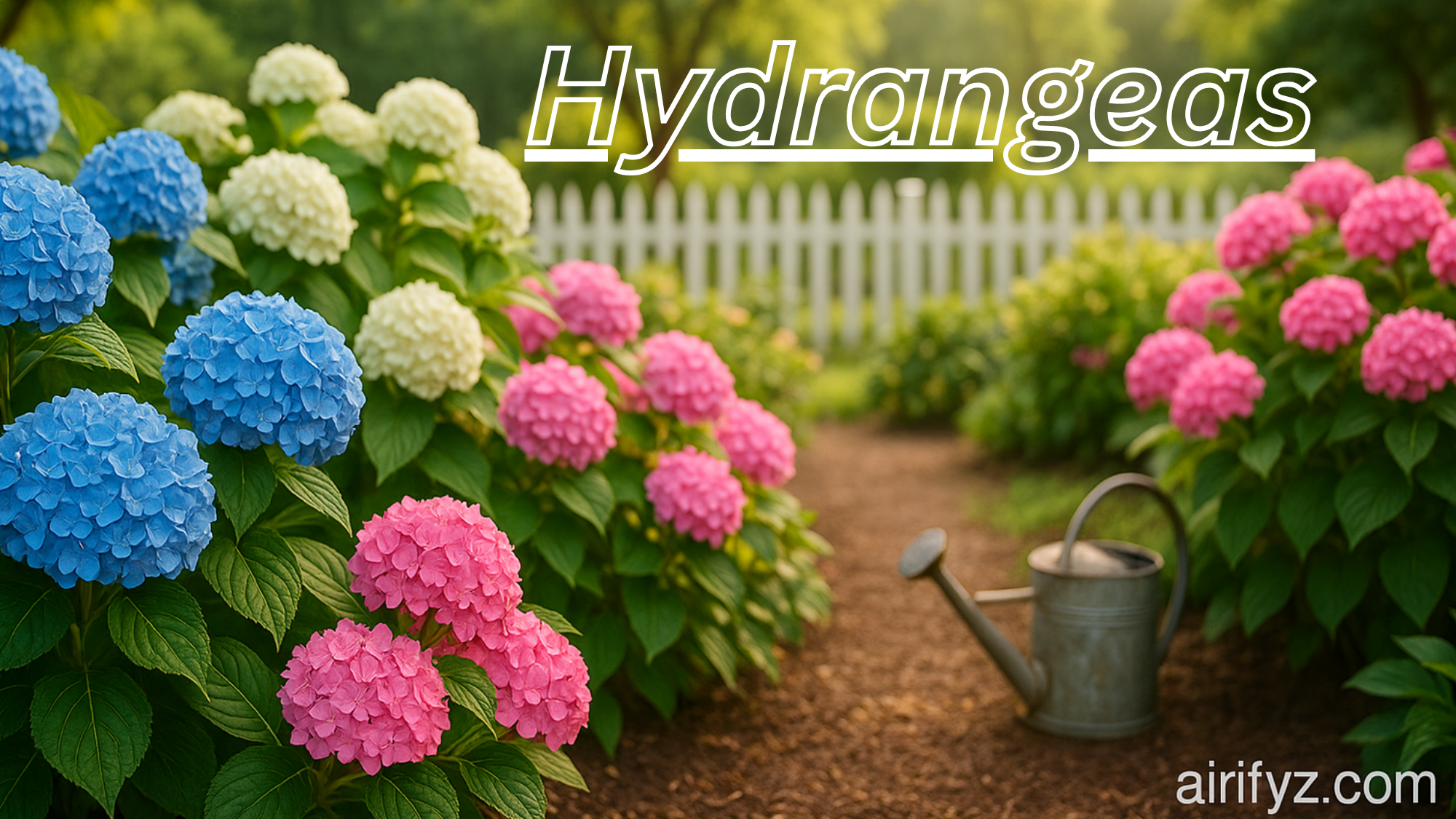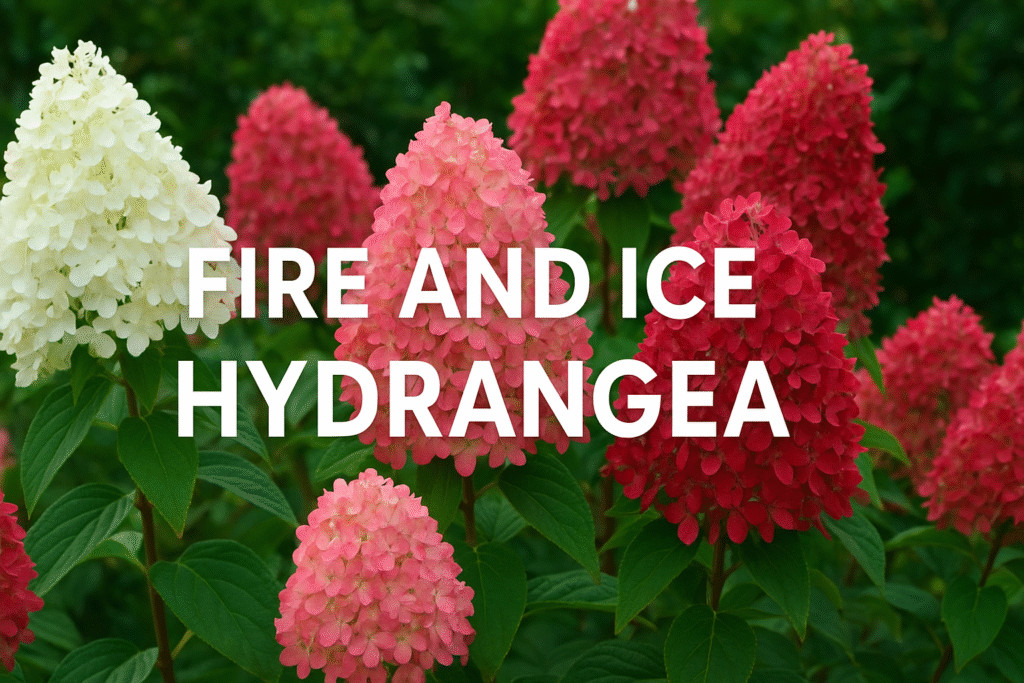INTRODUCTION:
Hydrangeas are more than just a pretty flower. Their lush blooms, shifting colors, and bold presence make them a garden favorite from coast to coast. Whether you’re planting a hedge, brightening a pot, or designing a show-stopping landscape, hydrangeas offer flexibility, drama, and elegance in equal measure.
This guide covers everything you need to grow, maintain, and love hydrangeas year after year—without overwhelm.
🌸 Hydrangea Varieties: Know Your Blooms
Not all hydrangeas are created equal. Some love sun, others thrive in shade. Some bloom on old wood, others on new. Here’s a breakdown of the 6 most popular hydrangea types and what makes each one special:
1. Bigleaf Hydrangea (Hydrangea macrophylla)
-
Large, rounded blooms—commonly pink, blue, or purple
-
Bloom on old wood; prune after flowering
-
Best for coastal gardens and mild winters
2. Panicle Hydrangea (Hydrangea paniculata)
-
Cone-shaped white blooms that turn blush pink
-
Blooms on new wood—great for cold climates
-
Hardy and easy to care for
3. Smooth Hydrangea (Hydrangea arborescens)
-
Known for ‘Annabelle’ and similar large white varieties
-
Blooms on new wood; can handle heavy pruning
-
Great for natural landscapes and shade gardens
4. Oakleaf Hydrangea (Hydrangea quercifolia)
-
Unique oak-shaped leaves with white cone blooms
-
Stunning fall foliage and drought tolerance
-
Native to the U.S. and thrives in woodland gardens
5. Mountain Hydrangea (Hydrangea serrata)
-
Smaller version of bigleaf, often used in containers
-
Delicate lacecap flowers
-
Ideal for higher elevations and filtered light
6. Climbing Hydrangea (Hydrangea petiolaris)
-
Clings to walls, trees, or fences
-
Produces fragrant, lace-like white blooms
-
Slow to establish but worth the wait
Tip: Choose varieties based on your climate zone, sunlight, and space. Don’t just go by bloom color!
✂️ Care & Pruning by Type
Hydrangea care isn’t one-size-fits-all. What works for a panicle hydrangea might ruin a bigleaf.
🌿 Pruning Tips:
-
Bigleaf & Oakleaf: Prune after flowering in late summer. These bloom on old wood.
-
Panicle & Smooth: Cut back Panicle and Smooth hydrangeas in late winter or early spring before new growth starts. They bloom on new wood.
-
Climbing: Lightly shape after flowering. Avoid cutting back hard.
🪴 General Hydrangea Care:
-
Watering: Deep water 1–2 times weekly. Hydrangeas hate drying out but don’t like soggy roots.
-
Soil: Use rich soil that drains well and mix in compost or natural organic materials to help your hydrangeas grow strong and healthy.
-
Light: Morning sun + afternoon shade is best for most types.
-
Mulch: Add 2–3 inches of mulch to retain moisture and prevent root heat stress.
Expert Tip: Hydrangeas love consistency. Avoid moving them unless necessary.
🎨 Controlling Bloom Color Naturally
Want blue hydrangeas? Or dreaming of deep pink? You can actually change their color—if you’re growing bigleaf or mountain hydrangeas.
✅ To Turn Hydrangeas Blue:
-
Use aluminum sulfate or acidify soil to pH 5.2–5.5
-
Add composted pine bark, coffee grounds, or peat moss
✅ To Turn Hydrangeas Pink:
-
Raise pH with garden lime
-
Avoid aluminum-rich fertilizers
DIY Trick: Crushed eggshells, wood ash, and lime make soil more alkaline (pink blooms). Coffee grounds, vinegar, and sulfur lower pH (blue blooms).
Keep in mind: white hydrangeas typically won’t change color.
🌿 Garden Inspo: Using Hydrangeas in Landscape Design
Hydrangeas aren’t just background plants—they’re statement-makers. Here’s how to use them creatively in your garden:
-
Formal Borders: Use panicle or smooth hydrangeas in rows along fences or paths
-
Woodland Corners: Add oakleaf hydrangeas under trees with hostas and ferns
-
Container Stars: Mountain or dwarf bigleaf hydrangeas shine in patio pots
-
Cottage Garden Mixes: Pair hydrangeas with roses, lavender, and delphinium
-
Hydrangea Hedges: A row of Annabelles or Limelights creates living privacy walls
Design Tip: Match bloom time and light preferences with nearby plants for harmony and bloom overlap.
📅 Seasonal Hydrangea Calendar
Stay on track with this simple care timeline:
🌱 Spring:
-
Prune smooth/panicle types
-
Fertilize early (slow-release, balanced)
-
Watch for new buds forming
🌼 Summer:
-
Water deeply during hot spells
-
Deadhead spent blooms if desired
-
Add mulch if not done earlier
🍂 Fall:
-
Stop fertilizing by mid-fall
-
Prune bigleaf only if needed (light shaping)
-
Enjoy fall color from oakleaf varieties
❄️ Winter:
-
Add mulch mound to protect roots
-
Leave spent blooms for winter interest
-
Avoid pruning (unless panicle/smooth)
You can also read about: 7 Limelight Hydrangea Secrets That Will Transform Your Garden
🌟 Final Thoughts: Fall in Love with Hydrangeas
Hydrangeas are forgiving, breathtaking, and versatile. Once you know the basics—your type, your zone, and your bloom goals—they reward you with beauty season after season. From cottage charm to modern borders, hydrangeas give you endless design possibilities.
So grab your gloves, test your soil, and start planting! You’re just one bloom away from transforming your garden.
FAQs about Hydrangeas
Q1: Why aren’t my hydrangeas blooming?
Likely pruning at the wrong time or too much shade. Bigleaf hydrangeas need old wood left intact.
Q2: Can I grow hydrangeas in full sun?
Yes—for panicle or smooth varieties. Others prefer partial shade, especially in hot regions.
Q3: What’s the best fertilizer?
A slow-release balanced fertilizer (like 10-10-10). Avoid high nitrogen—it grows leaves, not flowers.
Q4: How long do hydrangeas live?
With care, hydrangeas can live 20+ years. Some shrubs thrive for decades!



